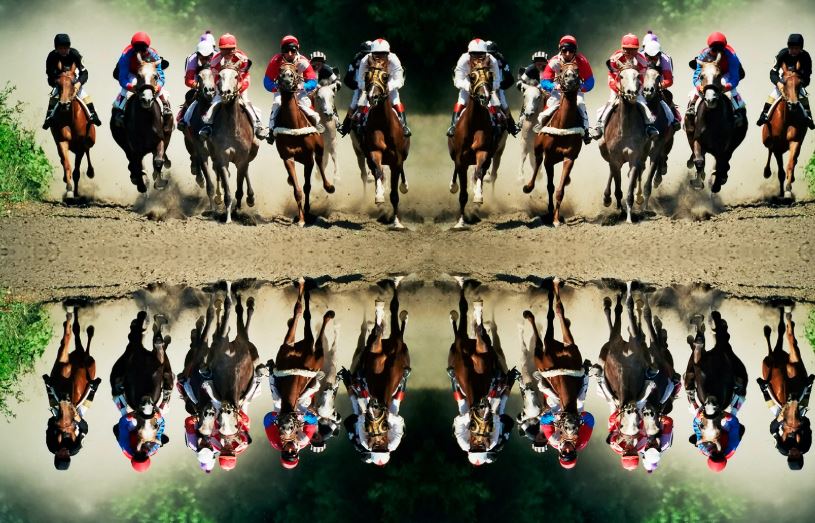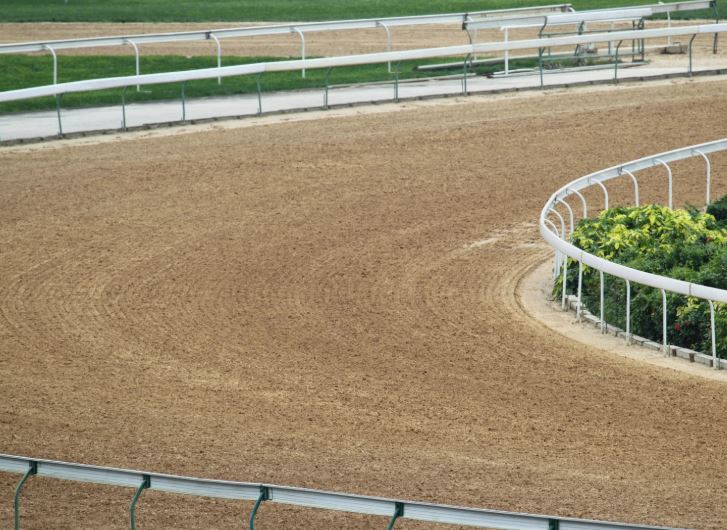Rain and Horse Racing: Will Wet Weather Cancel a Race?
The British weather is famously unpredictable, and many people wonder what happens to horse racing when the rain starts to pour. Whether you are new to the sport or just curious about how race meetings deal with wet weather, it can be surprising how often rain shapes decisions on race day.
Questions usually centre on safety, the state of the track, and how officials decide whether an event goes ahead as planned. If you are thinking about placing a bet online or at the course, knowing how a wet forecast affects the action could make the whole picture easier to follow.
Let’s explore how rain affects race days across the UK.
How Does Rain Affect Horse Racing?

Wet weather can change many aspects of a race meeting. On turf, rain softens the ground and can turn it muddy in a heavy downpour. Some horses handle softer conditions well, while others are more effective on firmer going.
Jockeys and trainers watch track conditions closely because a change in the going alters how a race is run. Slower finishing times are common on softer ground, and tactics may shift to suit the surface. Racecourses publish official going descriptions, such as good to soft or heavy, to help everyone understand how the turf is riding after rain.
Safety is central to every decision. Stewards and inspectors check for hazards like waterlogging and ensure the track is fit for purpose before any race takes place. Crowds and betting patterns can be affected too, especially if weather moves in quickly and conditions change during the meeting.
If you do decide to place a bet on horse racing, remember to do so responsibly and within your means; never wager more than you can afford to lose.
Can Horse Racing Be Cancelled Due to Rain?
Yes. Races can be called off if rain leaves the course unsafe. Waterlogged patches, standing water, and very soft ground can all create risks. In these situations, stewards and course officials assess whether racing can proceed without compromising welfare.
They look at how well the surface is draining, whether key areas are affected, and if conditions are likely to improve. Both Flat and National Hunt meetings can be disrupted, although the impact varies by course, local weather, and how long the rain has been falling. Strong winds and poor visibility are often considered alongside the state of the ground.
If a meeting is abandoned, the decision is announced through official channels so participants and bettors are informed promptly. Most bookmakers refund stakes on any races that do not take place, but it might be worth checking the site’s rules because policies can differ.
What Do Racecourses Do to Prepare for Wet Weather?
Racecourses put a lot of work into coping with rain. Ground staff monitor forecasts, walk the track, and use tools such as aerators and water pumps to help the surface recover after heavy falls. Modern drainage systems beneath the turf move water away more quickly, which can be crucial during prolonged bad weather.
When forecasts suggest persistent rain, protective measures target the most vulnerable areas. Tarpaulins may cover key sections, especially near the start and finish. Rails can be moved to create a fresh racing line, and field sizes may be limited if that helps protect the surface. In jump racing, individual fences or hurdles can be omitted if a landing area becomes unsafe.
Communication is constant. Clerks of the course, stewards, trainers, jockeys, and veterinary teams share updates so everyone understands how the ground is riding and what adjustments are being made to keep racing fair and safe.
Are Certain Surfaces More Affected by Rain Than Others?

In the UK, racing takes place on turf and on all-weather tracks made from sand and synthetic fibres. Each behaves differently when the weather turns.
Turf reacts quickly to rainfall. Water soaks in, going descriptions move toward soft and heavy, and some parts of the course can become waterlogged if the rain persists. Horses may find it harder to travel and accelerate on deep ground, which is why times tend to slow and tactics change.
All-weather tracks are designed to reduce disruption. Their sand and fibre blends drain rapidly and remain more consistent when it is wet, so meetings on these surfaces are less likely to be affected by rain alone. That said, extreme conditions can still lead to problems such as localised flooding, so inspections remain important.
When Will Officials Decide to Call Off a Race?
The Clerk of the Course leads the decision, working with stewards, ground staff, veterinary teams, and riders. They assess the whole picture, including surface condition, waterlogged or unstable areas, and additional factors like strong winds, fog, or poor visibility.
Inspections typically involve walking the track, checking drainage and key take-off and landing zones, and reviewing the latest weather data. Feedback from trainers and jockeys helps confirm how the surface is riding in practice. Sometimes the call is made early in the morning, and occasionally it comes close to post time if the weather has deteriorated quickly.
The welfare of horses and riders is the priority. If it cannot be guaranteed, the meeting is abandoned and the decision is communicated immediately so travel, entries, and betting markets can be managed with clarity.
Does Rain Change How Horses Perform?
Rain can influence a horse’s action, balance, and stamina. On soft or heavy ground, some horses shorten their stride and tire earlier, while others maintain rhythm and keep finding in the closing stages. That is why you will often see references to past form on soft or heavy ground in race previews.
Trainers examine a horse’s record under similar conditions to judge whether it copes with ease in the surface. Some horses, sometimes called mudlarks, tend to run well when the ground is deep. Others show their best on a sounder surface. Jockeys adapt too, choosing a line that offers fresher ground, adjusting when to challenge, and riding to conserve energy.
The key point is that conditions add another layer of uncertainty. Results are never guaranteed, and form can look very different once the rain sets in.
What Should Bettors Know About Rain and Racing?
If you are planning a bet, the forecast matters. Going descriptions on racecards show how much moisture is in the surface, and these updates can change during the day if showers move through. Horses with proven form on soft or heavy ground often attract support when rain arrives, while those reliant on quick conditions may drift in the market.
Wet weather can also affect the shape of a race. Non-runners are more common if the ground changes markedly, which can alter pace and tactics. Prices can move quickly as more information emerges, and deductions may apply if horses are withdrawn after markets are formed, so it could help to know a bookmaker’s non-runner and settlement rules.
All-weather meetings usually face fewer rain-related disruptions, but extreme weather can still intervene. Whichever surface you are following, use a licensed bookmaker, read the site’s terms, and only stake what you can afford to lose.
**The information provided in this blog is intended for educational purposes and should not be construed as betting advice or a guarantee of success. Always gamble responsibly.
*All values (Bet Levels, Maximum Wins etc.) mentioned in relation to these games are subject to change at any time. Game features mentioned may not be available in some jurisdictions.

